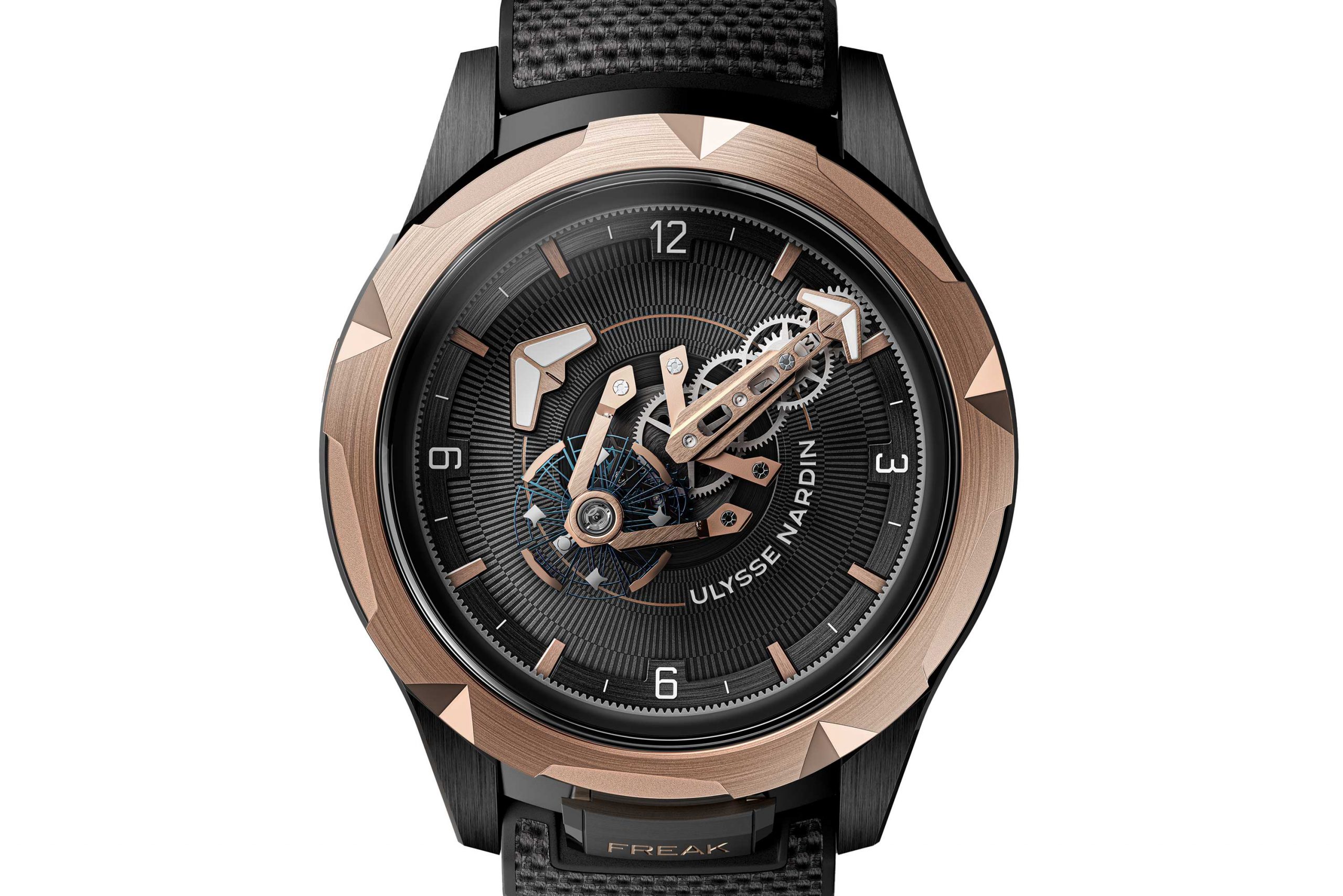Credits: Article and images by Cheryl Chia @ Revolution Watch Magazine. See the original article here - https://revolutionwatch.com/technical-beauty-comes-around-a-retrospective-of-the-ulysse-nardin-freak/


In this construction, the hour wheel arbor is mounted on the mainspring barrel and as the barrel unwinds, the hour wheel is driven against a fixed peripheral rack. It is secured in place by a bridge that acts as the hour hand. At the same time, the hour wheel drives the central pinion which, in turn, drives the entire gear train acting as the minute hand against an upper fixed peripheral rack. As such, the movement dispensed with the crown and keyless works; the mainspring is wound simply by rotating the caseback and time is set by rotating the bezel as the peripheral rack is fixed to the inner circumference of the bezel. Beyond that, the Freak was also the first wristwatch to incorporate a natural escapement, which was invented by Abraham-Louis Breguet in 1789. Characterized by two counter-rotating wheels, the natural escapement was so called because each impulse was delivered directly to the balance roller at each vibration, setting it apart from every known wristwatch escapement in use today and eliminating the need for lubrication. The Ulysse Nardin Dual Direct Escapement solved the issue of tolerance Breguet faced during his time by replacing traditional metal with precisely formed silicon components produced via deep reactive ion etching (DRIE). Hence, the Freak was the first watch to incorporate silicon parts, thereby ushering in the age of silicon in watchmaking.
The properties of silicon have rendered it an extremely beneficial material for watchmaking. Being a third the density of steel, it operates with low inertia, meaning the amount of energy required to move a silicon component is far less, thus allowing a movement to run with greater efficiency. Secondly, it is harder than steel and has a completely smooth surface, allowing interacting components to work together without the need for lubrication and with insignificant surface wear over time. Thirdly, it can be fabricated with extreme precision and in complex geometries through DRIE, with no further intervention after they have been formed. Fourthly, it is also highly elastic and therefore, shock- resistant as it is capable of bouncing back to its original shape immediately upon impact. Last but not least, it is also anti- magnetic, counteracting the effects of a long-time foe.
The first silicon escape wheels were produced for Ulysse Nardin by Centre Suisse d’Electronique et Microtechnique (CSEM), a Swiss research institute that specializes in micro-electromechanical systems (MEMS). More than that, the Dual Direct Escapement in the Freak ingeniously integrated Breguet’s two-level escape wheel construction into a single plane. Each escape wheel has 25 teeth with every fifth tooth protruding slightly with a pointed tip while the rest have flat tips. The teeth with flat tips serve to drive the next escape wheel and the pointed tips contact a pivoting stopper that delivers an impulse directly to the balance wheel at each vibration.
Credits: Article and images by Cheryl Chia @ Revolution Watch Magazine. See the original article here - https://revolutionwatch.com/technical-beauty-comes-around-a-retrospective-of-the-ulysse-nardin-freak/










